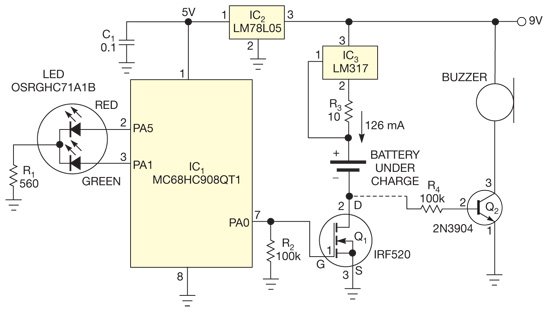Rechargeable NiCd (nickel-cadmium) cells are widely used in consumer devices because of their high energy density, long life, and small self-discharge rate. As a part of one project, I needed to design a reliable and inexpensive charger for a battery pack containing two NiCd AA-size 1200-mAh cells. In the process of the charger design, I needed to solve two main problems: first, setting a proper charge-current value, and second, stopping the charging process when the cell is full to avoid overcharging. This Design Idea describes a way to overcome both problems.
Most NiCd cells can be charged at two significantly different charge currents: either a fast charge with a high current or an overnight charge with a low current. Regardless of the charge speed, a steady charge current should be provided to the cell during the charging, and more energy must be supplied to the cell than its rated capacity to compensate for the energy lost as heat. The cheapest and safest way to charge a NiCd cell is to charge at 10% of the rated capacity per hour for 16 hours. Thus, the 1200-mAh cell should be charged at 120 mA. This approach does not require an end-of-charge sensor and ensures a full charge.
For more detail: Charge a nickel-cadmium cell reliably and inexpensively

